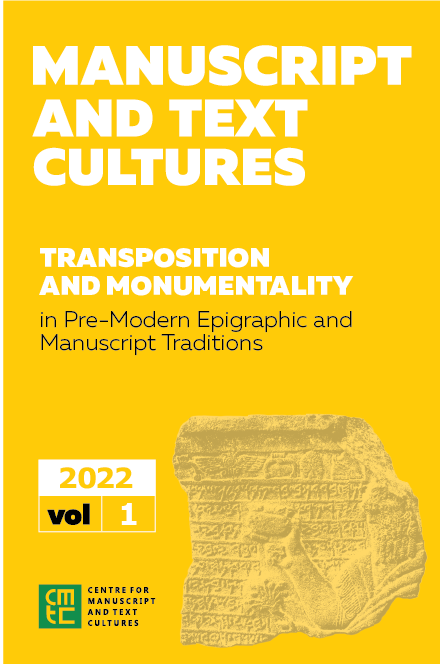Monumentalizing ritual texts in Ancient Egyptian pyramids
DOI:
https://doi.org/10.56004/v1a112Keywords:
Ancient Egypt, monumentality, Pyramid Texts, ritual texts, hieroglyphs, tombAbstract
The aim of this paper is to contribute to the discussion of the relationship between manuscript and epigraphic traditions in premodern cultures by addressing aspects of the monumentality of writing in the context of Ancient Egyptian tombs near the end of the third millennium BC (the late Old Kingdom). Ritual texts inscribed on the walls of subterranean chambers of kings' and queens' pyramids at Saqqara are known as 'The Pyramid Texts', the earliest known mortuary corpus of any civilization. The texts, which are inscribed in hieroglyphs, are carved, decorated, and painted in green. They are laid out in columns and cover surfaces up to three metres high in the main chambers and in the passages leading to the entrances of the pyramids. While the texts were performed during rituals and recorded in writing in contexts that are now lost, the carved hieroglyphic forms in the pyramids make it possible to glimpse the extent of manuscript culture and scribal practices of this period. The process of inscription involved not only reconfiguration from manuscript to wall, but also reinterpretation of the texts in terms of the spatial, architectural, and symbolical context of the tomb. This paper investigates the idea of monumentality in relation to the way these texts were reconfigured in the pyramids.
Downloads
Downloads
Published
How to Cite
Issue
Section
License
Copyright (c) 2022 Christelle Alvarez

This work is licensed under a Creative Commons Attribution-ShareAlike 4.0 International License.

